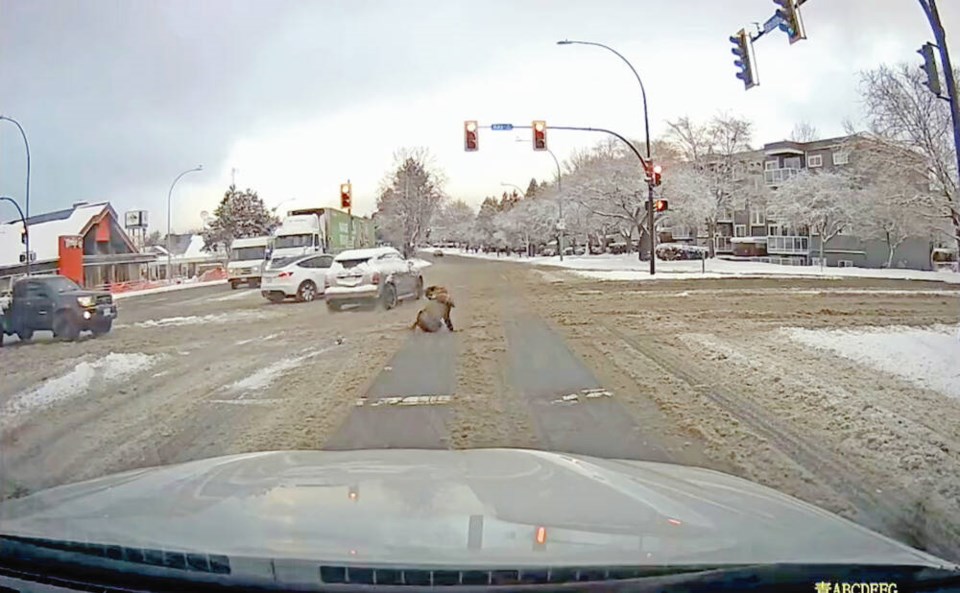The dashcam footage from Blanshard and Bay of a pedestrian being struck by a car back on Dec. 30th is a shocker. It’s one thing to hear or read about these terrible moments, it’s another thing to see it up close and for real on video. The unambiguousness of videos like this surely means they will become standard equipment on all new vehicles in the near future.
But despite their growing popularity and other advances in automobile tech such as GPS tracking and black box readouts, there will always be a need for effective citizen witnesses to traffic incidents.
Have you ever thought about it? What do I do when a motor vehicle catastrophe happens right in front of me? As a good citizen and driver your response can be vital. Here are some basics:
The number one rule is to keep yourself safe. It’s a good bet you will experience some form of mental shock if you witness a bad crash. Take a breath. If you feel you must help, stop your car only when and where it is safe to do so. Make sure you’re well out of the path of oncoming vehicles. You’re no good to anyone if you get hit or cause even more damage because of where you parked. If you can’t stop safely, drive to the nearest safe road position and call 9-1-1 from there.
If possible, deliver first aid within your own ability. Do not attempt rescues or extractions from a damaged vehicle unless there’s no other choice. Leave that work to the professionals. Most times it’s better to keep the 9-1-1 operator fully informed about what’s happening, especially if there are changes at the crash site or if a patient’s condition worsens.
Assuming things are under control, break out some paper and a pen and make some notes. Memories are fragile. Your account of what happened can be shaped by the passage of time or overhearing how others perceived the incident. Notes made by you at the time of an incident or as soon as possible afterwards are invaluable to investigators. Sign and date the paper you wrote on.
In those notes try to record the description of the vehicles involved as well as the description of the occupants, particularly the drivers. Describe the direction of travel and the pre-collision actions of the vehicles involved. Also take note of the road and weather conditions.
It’s important to record just only what you did and what you saw. Avoid conjecture. If you heard a crash then turned your head and saw that two vehicles are mashed together in an intersection, that’s your observation. Don’t speculate on who probably had the red or the green light unless you actually saw what happened.
Naturally, a cell phone camera is vital for recording details. However, use caution here as well. Keep aware of the hazardous surroundings you are in as you click away but also be aware of how photo taking might further agitate crash victims or other witnesses. Be courteous and discreet.
In a serious incident police, will also want to take a written statement from you. Inform them about your notes, photos or other recordings, like dashcam footage, and turn them over if requested. They can be extremely important guides for the officer in subsequent questioning.
Sometimes it is impossible to safely stop and give help. In that case, call it in or report online when you reach your destination. Don’t assume that someone else saw what you saw. The smallest pieces of information often turn out to be absolutely vital.
Finally, witnessing trauma such as this can have serious effects on your own mental health. You could well be traumatized by what you have witnessed. Police victim services can assist in finding support to help you.
Glove Box: A reader from Port McNeill correctly reminds us this week about the illegality and hazards of oversized tires that some people slap on their vehicles, especially at this time of year. This one is clearly covered in division 7 of sa国际传媒’s Motor Vehicle Act regulations: “Every motor vehicle, trailer and semitrailer not constructed so that the spray and splash of water and mud to the rear of the vehicle is minimized shall be equipped with mudguards and, if necessary, mudflaps.”
I’ve been “hosed down” a few times myself when I’ve been caught behind some of these big rock crawlers. It’s annoying and often dangerous. I’ve mentioned it before, the law should prevent the installation of illegal equipment in the first place rather than just waiting to catch it being used on our roadways.



